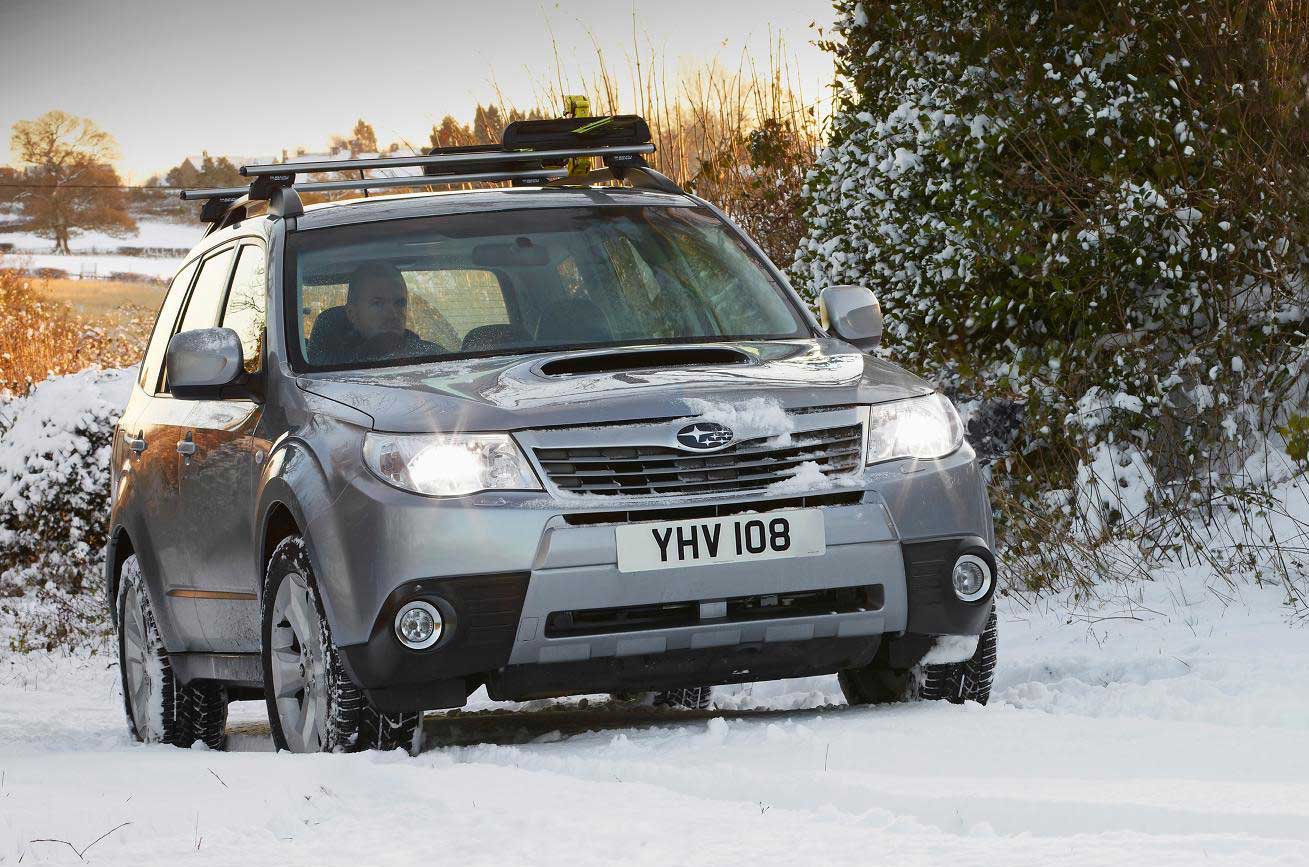As temperatures plummet and road conditions get more slippery, we offer driving advice to help you stay safe
Driving in winter can present additional hazards, ranging from a mildly inconvenient cold snap that can compromise visibility through to driving on ice and snow, which can endanger the wellbeing of both you and your fellow road users.
However, as long as you're well prepared and take sensible precautions, all winter driving hazards should be no more than a mild inconvenience, especially if your car is wearing winter tyres.
To maximise your safety on treacherous roads, follow our step-by-step guide to ensure you're as ready as you can be.
Winter car maintanence tips
Shortly before you drive
Clear all of the car's windows and make sure the wing mirrors are clean, so you have full visibility.
Remove any snow or other debris from the car's bodywork, including the roof, so it doesn't slide off when you brake or accelerate.
Make sure the car's windows are demisted properly before driving off.
Lift the car's windscreen wipers, and rear wiper if fitted, to check they're not stuck.
Ensure all snow and ice is cleared from your footwear before setting off, to prevent your feet sliding off the pedals when you use on them.
Remember to pack some essentials, such as a blanket. It's also worth carrying some window cleaner and kitchen roll, which will allow you to quickly clean windows and light clusters.

Winter tyre tips
When you drive
Don't rush your journey. Rushing will make you more stressed and potentially less able to concentrate. Leave plenty of time and check traffic and weather reports before you depart.
Proceed carefully and at a reduced speed when the road conditions require it.
Accelerate, brake and steer gently. Rapid, harsh inputs could unsettle the car.
Leave considerably longer stopping distances than normal. In heavy ice and snow, stopping distances are typically 10 times farther than normal.
If the wheels lock while braking, release the pedal momentarily then reapply the brakes. Repeat as necessary to bring your speed down.
Don't close up on the car in front when stopping - leave a large gap, in case they get stuck or slide backwards.
If you get stuck and your wheels spin, try accelerating away in second gear using a minimum amount of revs and steering.
Try to reduce torque to the wheels by staying in as high a gear as possible while on the move.
Conversely, if you have an automatic transmission and are at a standstill with the wheels spinning, try manually forcing the car to stay in first gear or second gear. Many automatics now have a winter or snow mode; if so, make sure it's on.
Locking an automatic in, say, second can also prove advantageous when driving on very poor roads. It can offer some engine braking and helps you control your road speed more easily.
Traction control systems can have an adverse effect when driving on ice and snow. Sometimes switching it off and allowing wheelspin from rest can give you more forward motion.
When travelling downhill, gently bleed off as much speed as possible and engage low gears to maximise engine braking. If you need to brake, do so in a straight line if possible - and gently.
Only attempt to drive up steep hills once you know the route is clear. Try to avoid stopping on an incline; remember that you'll need some run-up to get up a snowy hill - if you're going too slowly you could stop and slide back down.
If your car begins to skid, remember to steer into the direction of the skid - if the tail of your car steps out to the right, for example, you'll need to turn right to try and get the car pointing the right way.
Should you feel you are losing control, if possible keep your eyes fixed on where you want to go and steer in an effort to get there. Staring into an oncoming obstacle will usually result in a collision.
Try to get all braking and accelerating completed in a straight line. Try to avoid both while turning.
If fog and snow is causing glare during night driving on main beam, use dipped beams instead.